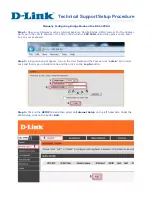
www.netcommwireless.com
NetComm Wireless NB16DG User Guide
31
OPTION
DEFINITION
WAN Interface
The interface to configure. When ADSL is selected you may select a permanent virtual circuit (PVC) from 0 to 7.
WAN Type
The type of ADSL connection to use.
Remote Host for keep alive
A host name to use for the keep alive function. This host will be used to send a ping request in order to keep the
connection alive.
IPv6 Dualstack
Enables IPv6 Dual stack which allows IPv4 and IPv6 to run side-by-side without encapsulating one protocol within the
other.
Username
The account name given to you by your ISP.
Password
The password given to you by your ISP.
(For security, this field appears blank. If you don't want to change the password, leave it empty)
Primary DNS
This feature allows you to manually assign a Primary DNS Server
(Optional - Refer to your ISP for more information)
.
Secondary DNS
This feature allows you to manually assign a Secondary DNS Server
(Optional - Refer to your ISP for more information)
.
Service Name
Enter the service name if your ISP requires it
(Optional - Refer to your ISP for more information)
.
Assigned IP Address
Enter the IP address assigned to your service. This is usually left blank.
MTU
The default MTU value is 0 (auto). It is set automatically when you connect.
NAT
This option enables or disables "Network Address Translation" for this connection type.
Data Encapsulation
Select the Data Encapsulation required by your ISP
(
Refer to your ISP for more information)
.
VPI Number
Enter the VPI provided by your ISP
(This will usually be 8 for Australia or 0 for New Zealand)
VCI Number
Enter the VCI provided by your ISP
(This will usually be 35 for Australia or 100 for New Zealand)
Schedule Type
Select the data schedule type required by your ISP
(Refer to your ISP for more information).
Multicast
Allows you to select the method of multicast or disable it.
IGMP Snooping
Allows you to enable or disable IGMP Snooping. IGMP Snooping configures the router to listen to IGMP conversations
between hosts and routers and maintain a map of the links that need IP multicast streams.
VLAN TAG
VLAN tagging is primarily used in virtual networks which span over multiple switches. VLAN tagging involves the router
inserting a VLAN ID into a packet header in order to identify which CLAN the packet belongs to. You may enable VLAN
tagging and specify the ID with a value between 1 and 4094.
RFC 1483 Bridged
















































